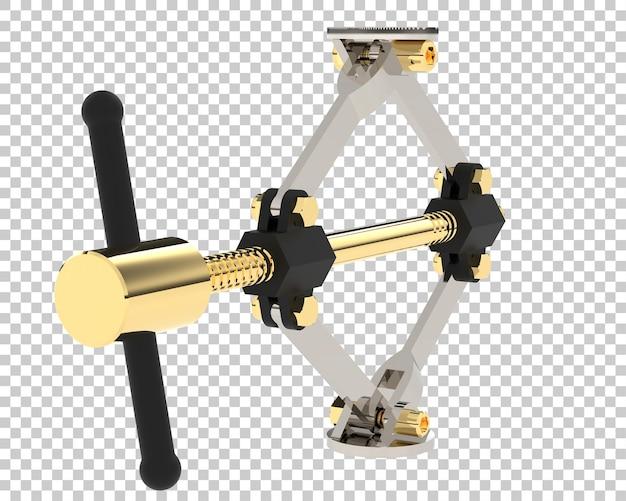Have you ever wondered how medieval armies were able to launch projectiles with incredible accuracy and power? One of their most ingenious inventions was the trebuchet, a formidable siege weapon that could wreak havoc on castles and fortifications. In this blog post, we’ll take a closer look at the main components of a trebuchet, providing you with a better understanding of its inner workings.
But first, let’s address the elephant in the room: why don’t we use trebuchets anymore? While they were undoubtedly effective, the invention of gunpowder and the subsequent development of cannons and other artillery rendered trebuchets obsolete. Nonetheless, they remain a fascinating piece of medieval engineering, and their construction and operation are still studied and admired today.
So, what are the main components of a trebuchet? At its most basic level, a trebuchet consists of a long beam or arm, a counterweight, a sling, and a release mechanism. These components work together in a carefully choreographed sequence to launch projectiles towards their intended targets. Of course, there are variations in design and size, but these key elements remain constant across different trebuchet models.
In the next sections, we’ll delve deeper into each of these components and explore their roles in the trebuchet’s functioning. We’ll also discuss some of the main factors that can influence a trebuchet’s performance, as well as the potential energy involved throughout the loading, cocking, and releasing processes. So, brace yourself for a journey back in time as we unravel the mysteries of the trebuchet!

What are the Main Components of a Trebuchet
Understanding the Inner Workings of the Mighty Contraption
Now that we’ve delved into the intriguing world of trebuchets, it’s time to uncover the main components that make this formidable machine tick. So, roll up your sleeves and brace yourself for a crash course in medieval engineering!
1. The Frame: A Sturdy Foundation
Just like a building needs a strong foundation, a trebuchet requires a robust frame to support its weighty endeavors. The heart of this magnificent contraption lies in its large wooden structure, meticulously crafted with beams and supports to handle the immense stress of hurling projectiles.
2. The Throwing Arm: Power Unleashed
The throwing arm, also known as the counterweight arm, is the star of the show. This elongated wooden lever stores potential energy, preparing to unleash its might upon the enemy. With a fulcrum at one end and a sling to cradle the projectile at the other, the throwing arm harnesses the force needed to launch with precision.
3. The Counterweight: Balancing Act Extraordinaire
No trebuchet would be complete without a balance between power and control. Enter the counterweight, a weighty hero that swings into action. Typically made of stone or sandbags, this mighty force seeks equilibrium with the throwing arm, ensuring a smooth operation and sending projectiles soaring through the air.
4. The Sling: The Secret Weapon
Hidden within the trebuchet’s design is the sling, a clever device used to hold the projectile in place until it’s time to soar. Just like a catapult, the sling cradles the ammunition and releases it at the perfect moment during the trebuchet’s swing, propelling it towards its target with astounding force and accuracy.
5. The Traction System: Making Movement a Breeze
While we’re on the subject of practicality, let’s not forget the trebuchet’s extraordinary traction system. This mechanism allows for adjustments in the angle of launch, providing the flexibility needed to adapt to changing battlefield conditions. With ropes, winches, and pulleys at play, the traction system puts the trebuchet operator in control of the projectile’s trajectory.
6. The Base: Keeping It Grounded
Last but certainly not least, we have the sturdy base that keeps the entire trebuchet grounded. Designed to withstand the tremendous forces at play, the base provides stability while ensuring the trebuchet remains firmly rooted in the midst of chaotic warfare. After all, nobody wants their magnificent machine toppling over mid-launch!
Now that we’ve explored the main components of a trebuchet, it’s clear that these marvels of medieval engineering were more than just brute force. With precision, ingenuity, and a touch of whimsy, trebuchets defined the art of siege warfare. So, the next time you witness a trebuchet in action, marvel at the intricate synergy of its components and honor the genius behind these historical war machines!

FAQ: What are the main components of a trebuchet
What are the three main types of catapults
There are three main types of catapults: the mangonel, the ballista, and the trebuchet. While all three have their unique features, the trebuchet is often hailed as the most impressive and effective.
Why are trebuchets not commonly used nowadays
Ah, the trebuchet, a true marvel of engineering! Although they were once the star of the battlefield, they have sadly fallen out of fashion in modern times. These days, we rely more on advanced weaponry and less on flinging gigantic projectiles through the air. But hey, don’t underestimate the trebuchet! It may be old-fashioned, but it’s definitely still a crowd-pleaser at medieval-themed events.
Where does the trebuchet store its potential energy
Ah, the wondrous world of physics! The trebuchet stores its potential energy in the counterweight. As the crew loads the trebuchet with a hefty projectile, the counterweight is raised up, converting physical effort into stored energy. When the release mechanism is engaged, that stored energy is transferred to the projectile, launching it towards its unsuspecting target. It’s all about turning potential into powerful kinetic energy!
What was the ultimate siege weapon
Move over, battering ram! The trebuchet was, without a doubt, the king of siege weapons. With its incredible range, accuracy, and sheer destructive power, it brought fear to the hearts of even the toughest castle defenders. Just imagine standing atop a fortress wall, seeing one of these colossal contraptions hurling projectiles towards you. Yikes!
What are the key components of a trebuchet
Let’s dive into the inner workings of this magnificent machine! The main components of a trebuchet include:
1. The Frame
The sturdy frame forms the foundation of the trebuchet. It holds all the other components together and provides the necessary stability for its earth-shattering actions.
2. The Beam
Ah, the elegant beam! Attached to the frame, this long and mighty lever is what gives the trebuchet its incredible throwing power. It’s all about getting that projectile moving with maximum force!
3. The Counterweight
The trebuchet’s secret weapon! The counterweight is responsible for storing all that fantastic potential energy. It could be made of various heavy materials, such as rocks or sandbags, depending on the trebuchet’s size and purpose.
4. The Sling
Ready, aim, release! The sling acts as the trebuchet’s throwing arm, cradling the projectile and releasing it with expert precision. It’s like slingshotting your way into medieval glory!
5. The Release Mechanism
Timing is everything, my friend! The release mechanism ensures that everything comes together at just the right moment. When triggered, it allows the counterweight to descend, transferring energy to the projectile and launching it through the air.
6. The Traction
What’s the first rule of trebuchet club? Stay firmly on the ground! The traction keeps this powerful machine from turning into a runaway projectile itself. It provides stability, preventing the trebuchet from launching itself into the stratosphere.
What factors influence the performance of a trebuchet
Ah, the trebuchet, a delicate balance of power and finesse! Several factors can greatly impact a trebuchet’s performance:
1. Counterweight Weight
A heavier counterweight means more potential energy, resulting in a more forceful throw. However, finding the right balance between weight and controllability is key. We don’t want our projectile ending up in the neighbor’s garden, do we?
2. Projectile Weight and Design
The weight and design of the projectile also play a significant role. A heavier projectile will go further, but its shape and aerodynamics can affect accuracy and trajectory. Finding that sweet spot is crucial if we want to hit our mark with precision.
3. Beam Length
The length of the trebuchet’s beam affects its throwing power. A longer beam allows for greater leverage, generating more force and distance. However, a longer beam also requires a larger frame, which might not always be practical. It’s a delicate balancing act!
4. Release Mechanism Efficiency
The efficiency of the release mechanism influences how smoothly the trebuchet operates. A well-designed and properly lubricated one will ensure that all that stored energy is transferred to the projectile efficiently. We want to achieve maximum power without any unexpected hiccups!
5. Environmental Conditions
Mother Nature has her role to play too! Wind speed and direction can greatly affect the trajectory of your projectile. Launching into a gust of wind might send your prized stone flying off course. It’s always good to keep an eye on the elements!
6. Operator Skill and Experience
Last but certainly not least, the skill and experience of the operator are paramount. It takes practice and finesse to handle a trebuchet like a pro. Understanding its mechanics, adjusting for different factors, and having a sense of timing can make all the difference in achieving a successful launch.
So there you have it, my curious friend! The main components of a trebuchet, the factors that affect its performance, and a glimpse into the fascinating world of siege weaponry. May your projectiles always find their targets, and your trebuchet adventures be filled with excitement and joy!
